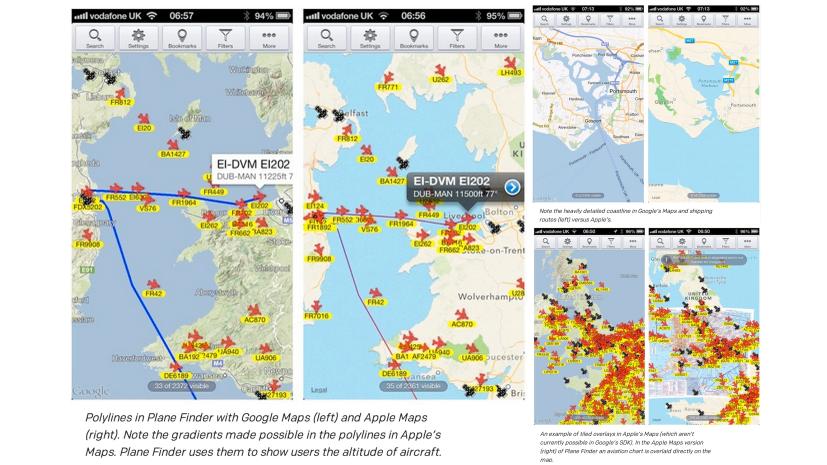
Google has recently launched Google Maps for iOS and FastCompany closely analysed it along with Apple’s MapKit to find out the difference between both services from a developers perspective. FastCompany has posted this analysis on Monday, March 18th, in which the organization has got insight from a number of iOS app developers with applications that depend on the SDKs and also highlighted a few things that the Cupertino-based company is doing better than the search engine giant, irrespective of the fact that users believes Google Maps is better.
Developer Bryce McKinlay explains it as, “Google doesn’t currently charge for the Places API, but they do require a valid credit card for access–which gives you a quota of 100,000 daily requests. So you have to wonder if they plan to start charging sooner or later. That 100,000 limit perhaps sounds reasonable, but each user session can generate many requests–particularly when using the ‘autocomplete’ feature of Tube Tamer–and some types of requests count for 10 times the quota each, so it can get used up pretty quickly.”
Although, developers have learned that when it comes to 3D buildings, location lookup, directions, hybrid satellite imagery and geo-coding Google is a winner without a doubt, but they also found out that Google Maps SDK has got some drawbacks too like increased app size, gradient polylines, limitations with markers, overlays, and quotas for the Places API.
McKinlay and Tube Tamer, who have developed the transportation app, have talked about some of the advantages of using Apple’s MapKit:
McKinlay said that, “Subjectively, the current version of the [Google] SDK does not perform as well as MapKit. GMSMapView’s frame rate is capped at 30fps, which is lower than typical for iOS and results in a slight but noticeable ‘jitter’ effect when panning and zooming the map. Drawing of labels and POIs sometimes lags behind if you pan quickly, even on a fast device like the iPhone 5.”
McKinlay also said that, “The fact that annotations in MapKit are UIViews also means that animation and other effects can be applied easily using Core Animation, which isn’t currently possible with the Google Maps SDK approach.” He also points out that MapKit has some other handy features that Google’s SDK currently lacks, like “Follow user location” and “Follow with heading” modes. “MapKit provides a button that automatically moves the map to follow the user’s location, and rotates the map according to the compass heading. This is very helpful for pedestrian navigation. It is possible to implement this manually in Google’s SDK, but it adds extra development time/effort.”
It seems that a number of developers think that Google still needs to do some work on Maps SDK for iOS.
Source: 9to5Google
Photo: 9to5Google